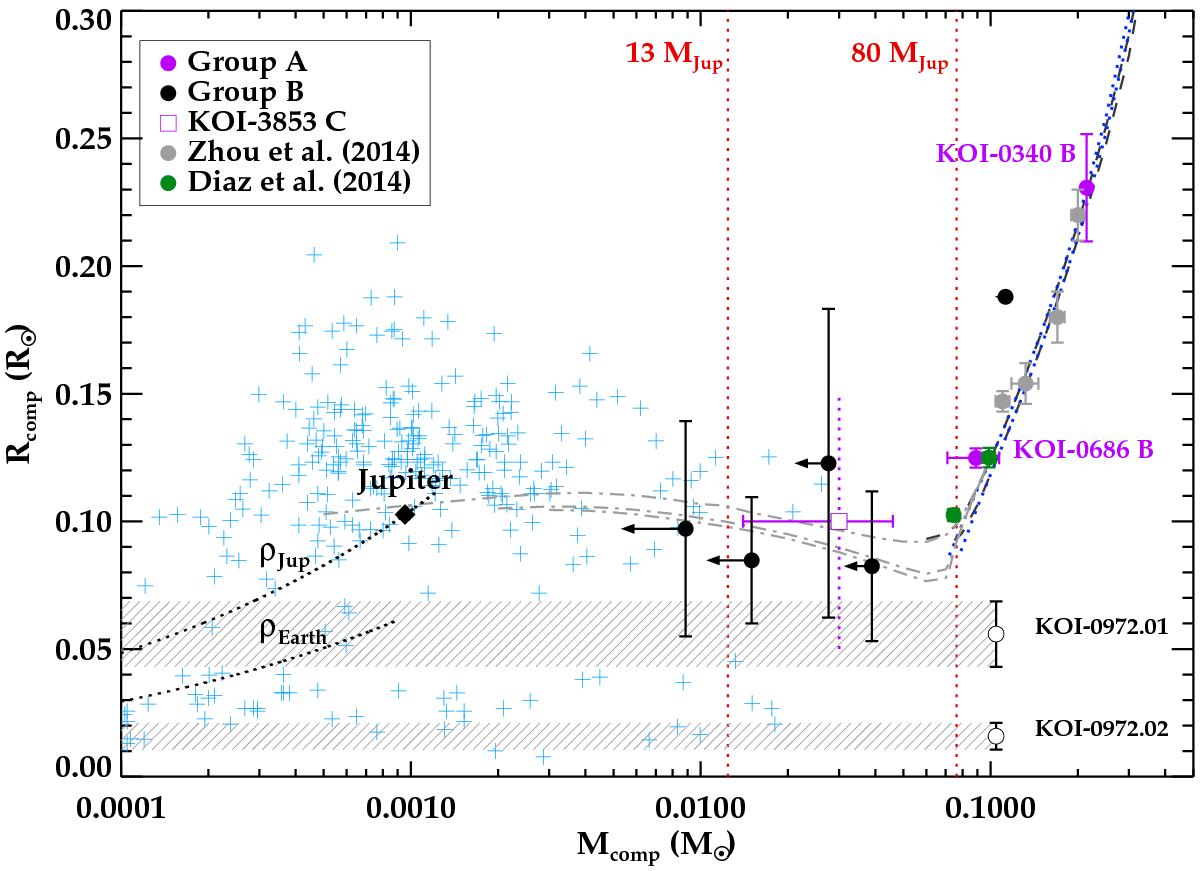Fig. 9

Mass-radius diagram of the companion objects with M < 0.3 M⊙ found to some of the analyzed KOIs in groups A and B. The open square shows the location of the possible third body in the KOI-3853 (i.e., KOI-3853 C), with an ad hoc assumed radius of 0.1 R⊙. The dotted vertical error bar indicates our unknown about its actual size, see Sect. 5. We used the isochrones of 1 Gyr and 5 Gyr (from top to bottom) from Baraffe et al. (1998) for solar metallicity (dotted dark blue line) and [Fe/H] = −0.5 (dashed light blue line). In the case of masses below 0.1 M⊙, we used the Baraffe et al. (2003) isochrones (dotted-dashed gray lines) of 1, 5, and 10 Gyr (from top to bottom). The arrows in the Group B KOIs indicate that their masses are just upper limits. The dashed regions illustrates the range of masses allowed for the KOI-0972 planet candidates (see Sect. 5). For reference, we have plotted the known planets with provided masses and radius published in the exoplanet encyclopedia (www.exoplanet.eu) as light blue plus signs.
Current usage metrics show cumulative count of Article Views (full-text article views including HTML views, PDF and ePub downloads, according to the available data) and Abstracts Views on Vision4Press platform.
Data correspond to usage on the plateform after 2015. The current usage metrics is available 48-96 hours after online publication and is updated daily on week days.
Initial download of the metrics may take a while.


